Importing & Exporting Objects
Disguise allows you to export objects from one project, which can then be imported into different project. For example, you can export a track, stage object or device from one project into another. If an object is dependent other resources in the project (e.g. a track might contain layers which use a number of different mappings), the software automatically bundles all dependent objects into the same export package.
The examples here will show how to transfer a track, surface or screen position receiver from ProjectA into ProjectB. Many other types of objects in Designer can be exported and imported by adapting the steps described.
Workflow
Section titled “Workflow”- Make objects (tracks, layers, devices etc) in Project A.
- Right-click the header of the object editor you wish to export.
- Click the export option. The file is written to a discrete D3EXPORT file in the output folder of the project.
- In the project folder of Project B. Make a Packages folder.
- Copy the D3EXPORT file from the output folder of Project A to the Packages folder of Project B.
- Create an object with the exact same name in Project B.
- Right-click the header of the object editor of your newly created object.
- Click the import option an choose the file you wish to import from.
- Left-click any items you do not wish to import that may be part of the object.
- Click the Import select objects button at the top of the editor.
Transferring a track to a different project
Section titled “Transferring a track to a different project”To export a track from ProjectA
Section titled “To export a track from ProjectA”- Run ProjectA, which contains the track you wish to export.
- Right-click the track title bar to open the track editor.
- Right-click the title of the track editor.
- Left-click Export
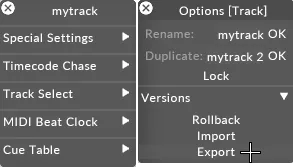
A file will be created in the output sub-directory of the project folder. This file contains the contents of the track, its layers as well as any resources the track references (e.g. video files, mappings and audio patches).
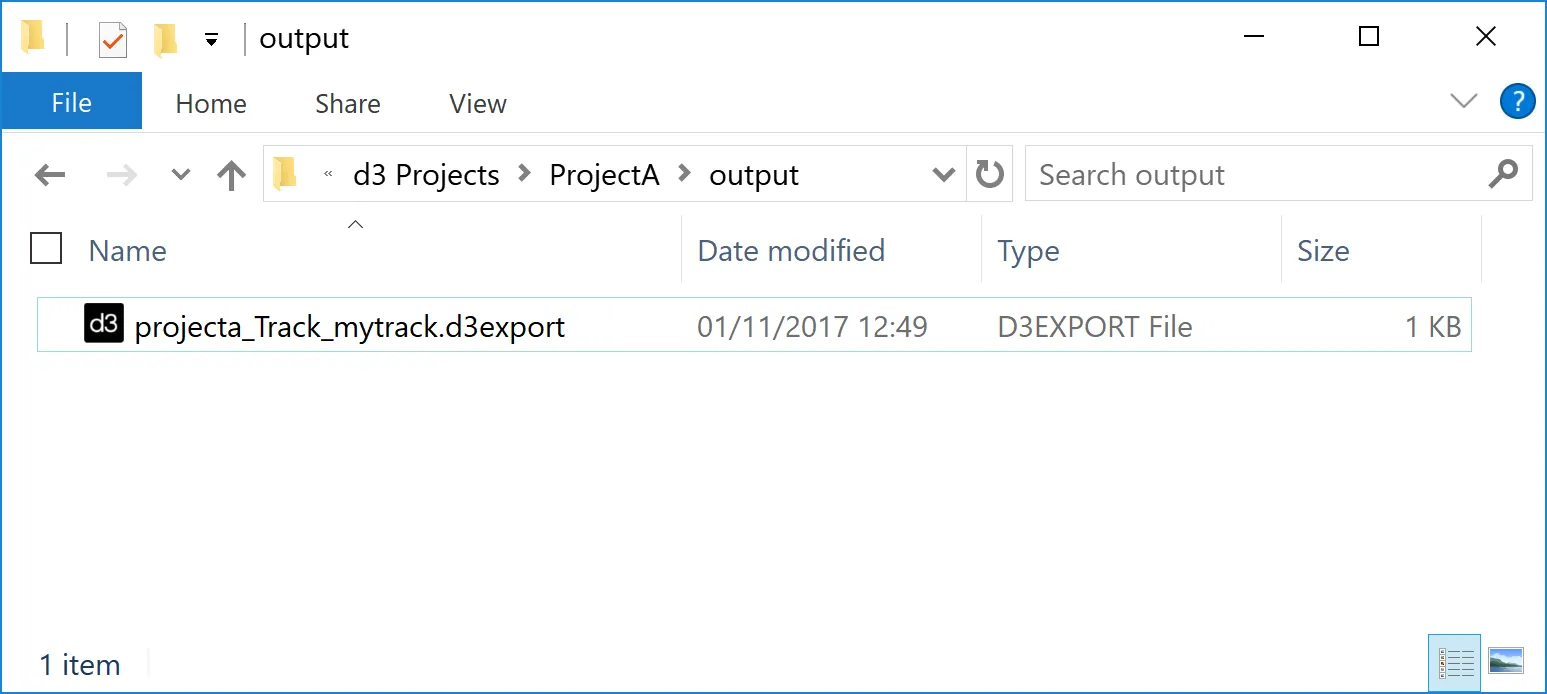
To import a track into ProjectB
Section titled “To import a track into ProjectB”- In Windows, create a new sub-directory called packages inside the project folder.
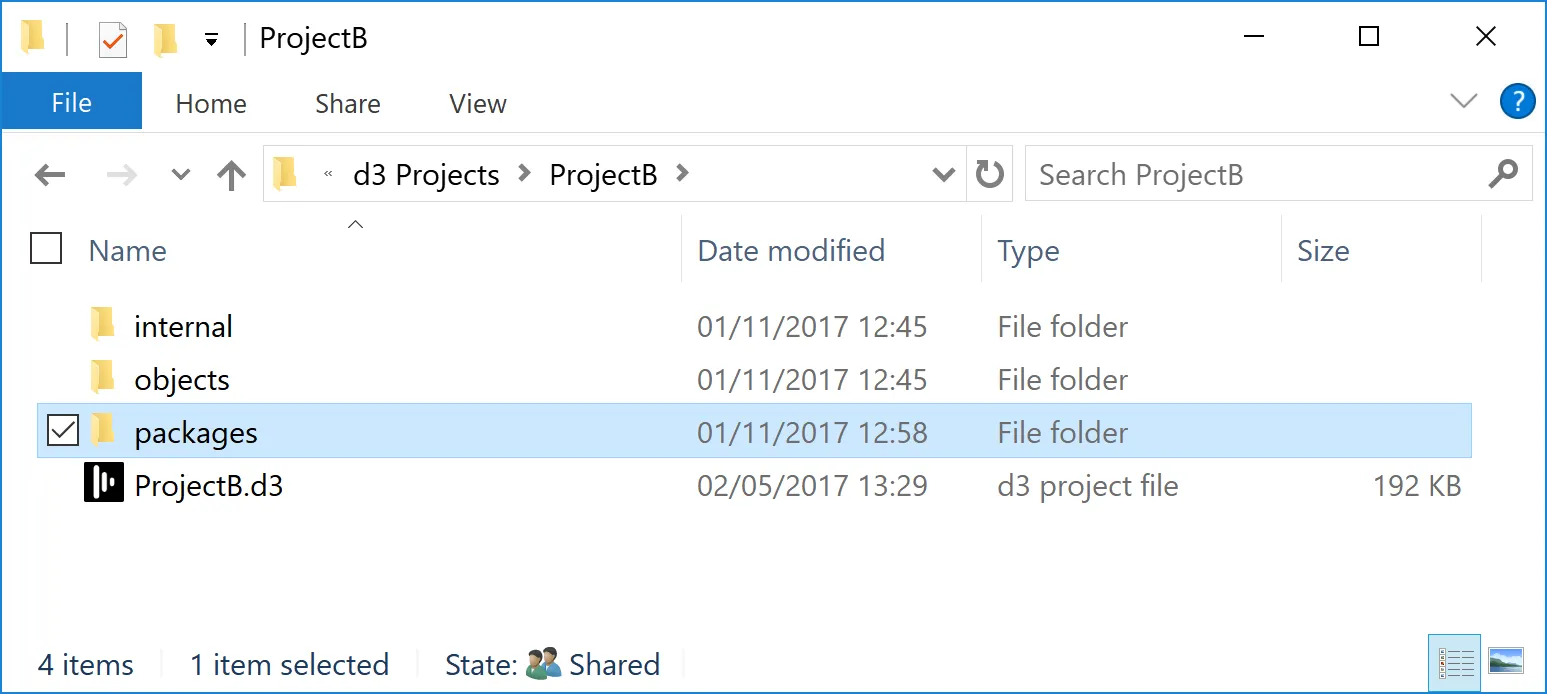
- Copy the exported file into the new packages folder in ProjectB
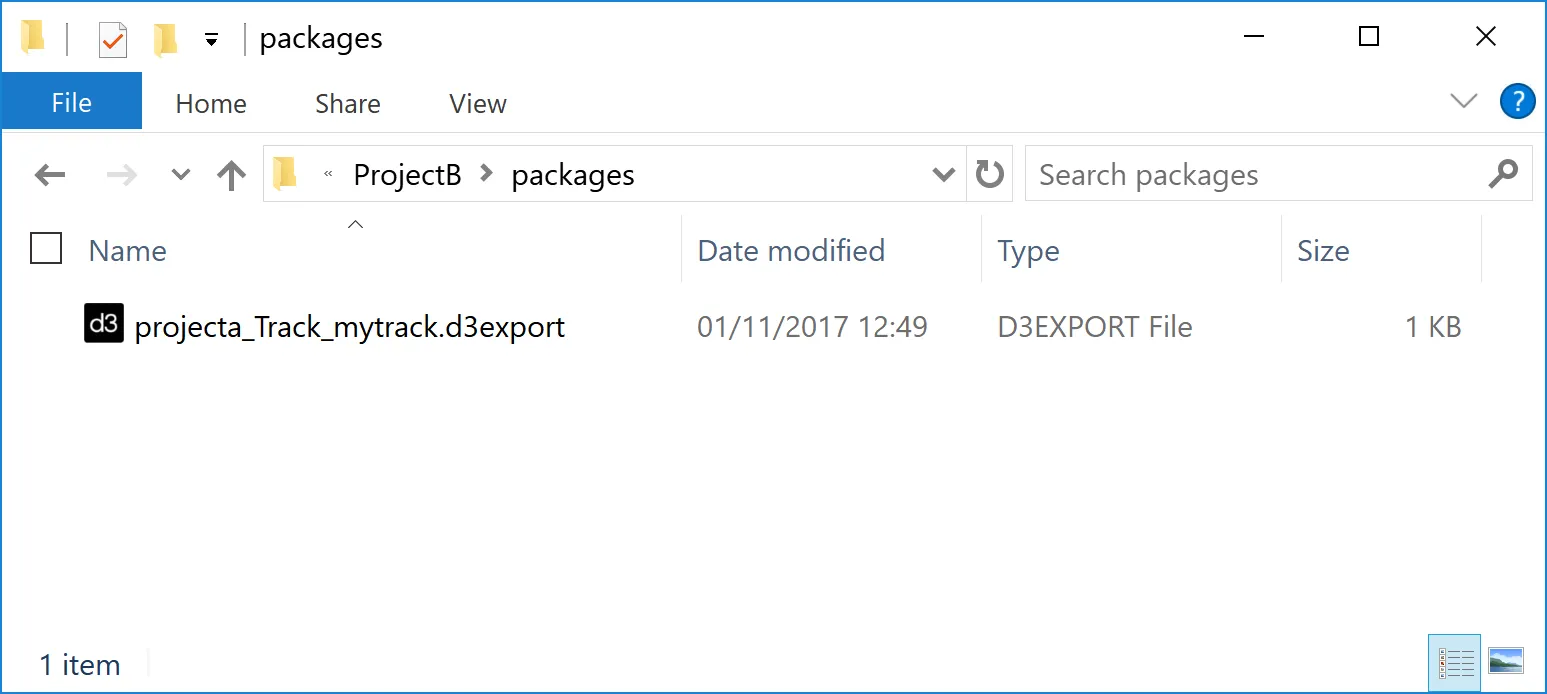
- Run ProjectB.
- Create a new track called mytrack (must be exactly the same name as the track from which you wish to import).
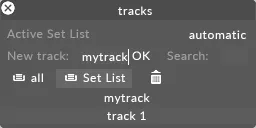
- Right-click the track title bar to open the track editor.
- Right-click the title of the track editor.
- Left-click Import

- Select the file from which you wish to import.
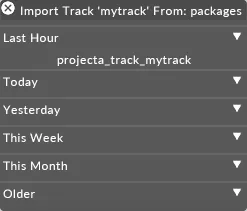 A list is shown, which includes mytrack and also any dependent resources which were exported alongside mytrack. If an object with the same name already exists in ProjectB then you can prevent overwriting it with the version from ProjectA by clicking on it.
A list is shown, which includes mytrack and also any dependent resources which were exported alongside mytrack. If an object with the same name already exists in ProjectB then you can prevent overwriting it with the version from ProjectA by clicking on it.

- Click import selected objects to bring the selected objects into ProjectB.
Transferring a surface (or other stage object) to a different project
Section titled “Transferring a surface (or other stage object) to a different project”To export a surface from ProjectA
Section titled “To export a surface from ProjectA”- In ProjectA, right-click on the screen.
- Right-click on the title of the screen editor
- Left-click Export
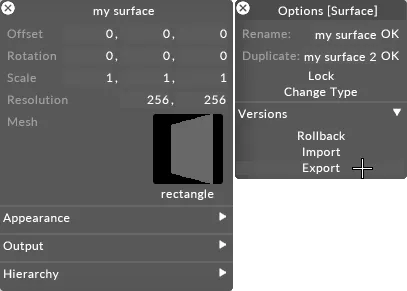
To import a surface into ProjectB
Section titled “To import a surface into ProjectB”- Copy the exported from from ProjectA/output to ProjectB/packages.
- In ProjectB, create a new surface with the name my surface (must be exactly the same name as the surface from which you wish to
import).
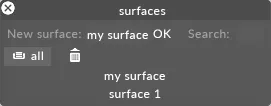
- Right-click on the title of my surface.
- Left-click on Import.
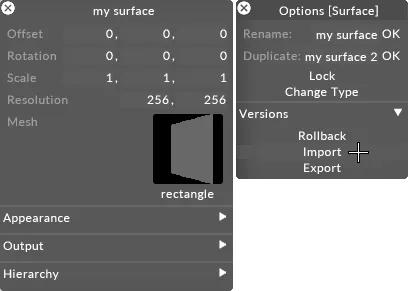
- Select the file from which you wish to import
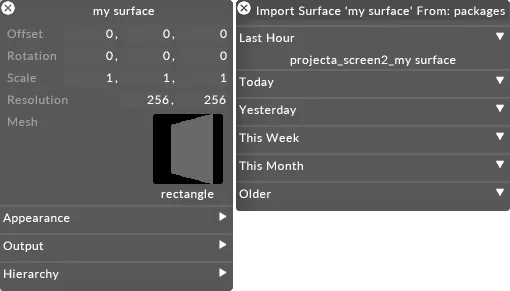
- Click import selected objects to overwrite mysurface’s properties which the exported data.

Transferring a ScreenPositionReceiver (or other device) to another project
Section titled “Transferring a ScreenPositionReceiver (or other device) to another project”To export a ScreenPositionReceiver from ProjectA:
Section titled “To export a ScreenPositionReceiver from ProjectA:”- In ProjectA, open the device editor.
- Right-click on the title of the screen editor.
- Left-click Export
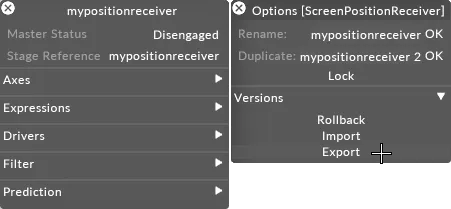
To import a ScreenPositionReceiver into ProjectB:
Section titled “To import a ScreenPositionReceiver into ProjectB:”- Copy the exported file from from ProjectA/output to ProjectB/packages.
- In ProjectB, create a new ScreenPositionReceiver with the name mypositionreceiver (must be exactly the same name as the device from
which you wish to import).
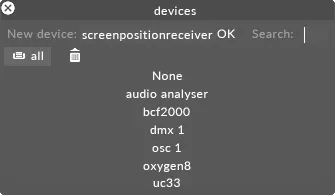
- Right-click on the title of mypositionreceiver.
- Left-click on Import.
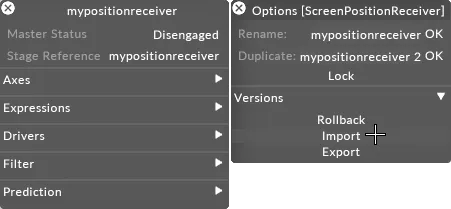
- Select the file from which you wish to import.

- Deselect any objects you do not wish to overwrite in ProjectB. Click import selected objects to import the selected objects’ data.
